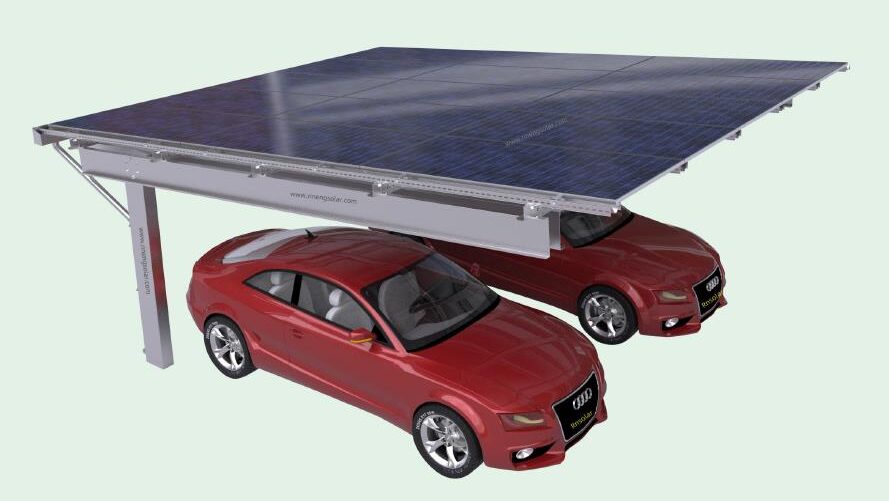The maintenance of solar panels during snowy days is of vital importance. Here are some key points to note:
First, installation and preventive measures
Large-angle installation
When installing solar panels, appropriately increasing the installation Angle can reduce the accumulation rate of snow. Generally speaking, an installation Angle of around 40 degrees is a better choice. In this way, when the snow accumulates to a certain thickness, it will automatically slide down under the effect of gravity, reducing the frequency of manual cleaning.
Keep a distance from the ground
When installing solar panels, make sure the bottom is kept at a certain distance from the ground. This way, when snow slides down, it won’t accumulate at the bottom of the panels, thus preventing the snow from gradually covering the entire battery assembly.
Second, snow removal and maintenance
Clear the snow in a timely manner
The timing of snow removal: Snow removal should be carried out as much as possible in the early morning or evening when the sun is dim, on cloudy days or during the intervals when snow stops. Avoid cleaning under strong light to prevent the hot spot effect of photovoltaic arrays caused by artificial shadows. At the same time, it is strictly prohibited to clear the accumulated snow when there is continuous strong wind and heavy snow.
Cleaning tools: Use soft items such as plastic spatulas, wooden spatulas or clean cloth mops, etc., to gently push the snow off. Avoid hitting the solar panels with sharp objects to prevent scratching the glass.
Precautions for clearing: Before clearing the accumulated snow, the grid connection circuit breaker of the distribution box should be disconnected and the inverter turned off to eliminate the risk of electric leakage. Cleaning personnel should wear protective clothing and hats to avoid injuries caused by scraping the frames of photovoltaic modules and photovoltaic brackets. It is strictly forbidden to step on the components for cleaning to avoid causing hidden cracks or damage to the components.
Prevent freezing and residue
Avoid hot water rinsing: It is strictly prohibited to directly rinse the accumulated snow on the surface of the modules with hot water to prevent damage to the photovoltaic modules caused by uneven heating. If the snow on the surface of the component has turned into frozen snow or ice, do not forcibly clean it. You can wait until it melts before cleaning.
Thorough removal: Snow removal should be thorough to avoid local residue. Local residual snow accumulation can form a hot spot effect, affecting the lifespan of components and power generation efficiency.
Third, system inspection and maintenance
Check the inverter
Snow accumulation on the top can undermine the stability of the inverter installation structure and cause severe icing on the casing. Snow accumulation at the bottom can bury AC and DC interfaces and communication equipment, which may lead to fault alarms such as leakage current or affect communication. Therefore, the snow around the inverter should be cleared in time. Use tools such as plastic or wooden shovels to avoid damaging the inverter’s casing and AC/DC cables.
Check the brackets and cables
During the snowy and windy season, promptly inspect the fixation of the power station support, re-tighten the support pressure blocks, and check the fixed guy ropes to ensure the stability of the support. At the same time, inspect the cables, distribution boxes and other equipment to ensure that the lines are undamaged and the joints are not loose, thereby enhancing the safety of the system.
Fourth, other precautions
Make use of the reflection effect of snow
In some cases, the reflective effect of snow can slightly promote photovoltaic power generation. If the snow does not cover the components, the snow on the ground will act like a mirror, reflecting sunlight back to the solar panels, thereby increasing the power generation.
Pay attention to weather warnings
Before the arrival of snowy days, one should pay close attention to weather forecasts and warning information, and make preparations in advance for snow removal and maintenance.
Safety first
When carrying out snow removal and system maintenance, it is essential to ensure the safety of personnel. Take necessary safety measures, such as wearing protective equipment and avoiding working in bad weather conditions.
In summary, the maintenance of solar panels during snowy days requires comprehensive consideration from multiple aspects such as installation and prevention, snow removal and maintenance, system inspection and maintenance, as well as other precautions, to ensure that solar panels can operate normally and achieve the maximum power generation efficiency during snowy days.


